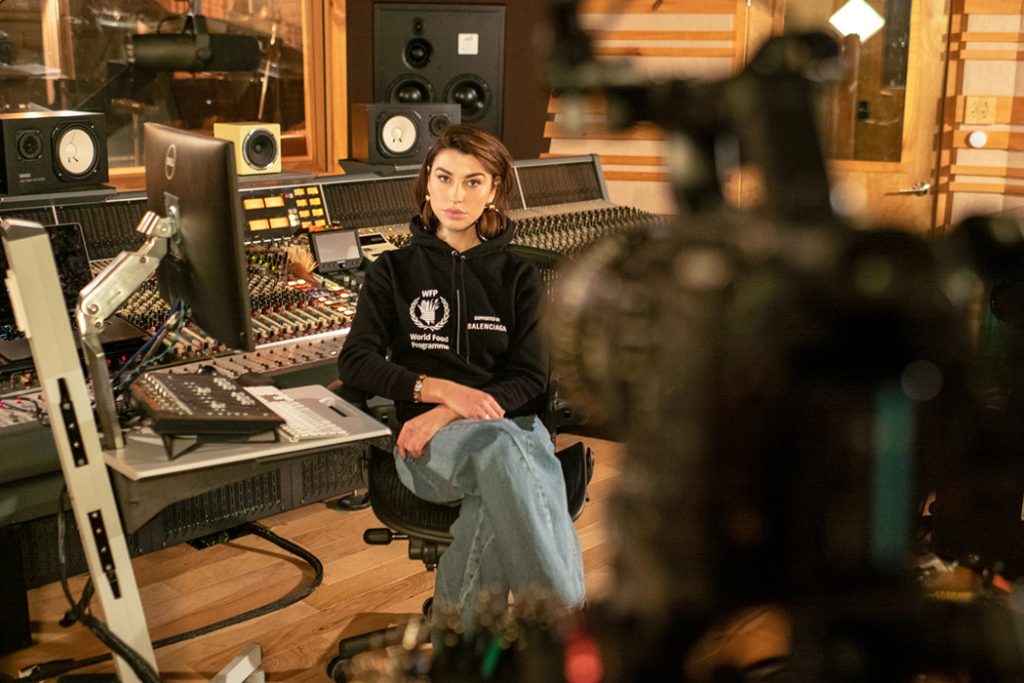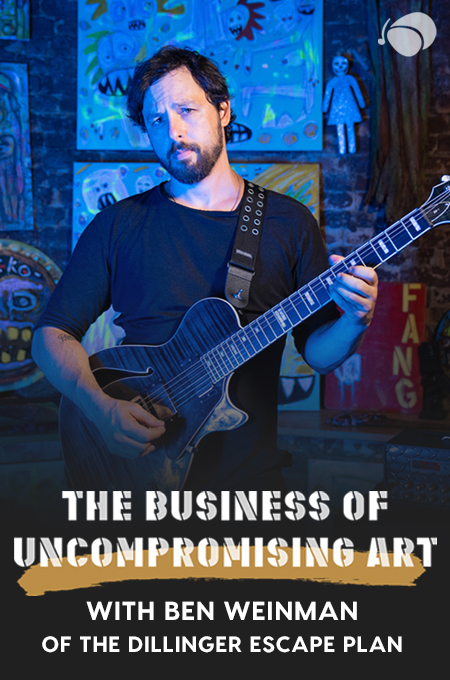
Soundfly just launched a new online course with Kimbra, in which the Grammy Award winning pop star showcases her innovative approach to singing and vocal arranging, and demystifies the techniques and creative processes behind her most beloved songs.
The one-of-a-kind course revolves around a number of different educational themes, each expanded out into full sections, and along the way Kimbra breaks down how she takes songs from ideas to demos to full-fledged productions and collaborations. It’s truly exciting to see a master of her craft get granular about every detail of what goes into creating deeply touching and memorable performances; on record and in a live setting.
We wanted to share the songs you can watch Kimbra deconstruct in her course, Kimbra: Vocal Creativity, Arranging, and Production, on Soundfly. Here is a playlist of songs culled directly from her course — so you can discover Kimbra’s incredible talent in a new light — and beneath, just some of the ways these songs are used to teach her contemporary and innovative approaches to voice.
“Past Love” — Developing Your Vocabulary
Kimbra’s “Past Love” is a great example of how much you can open up your creative possibilities by employing not just a technical understanding of your song elements, but a poetic one as well. What does that mean? While a technical vocabulary might help to explain how the parts of your song (ie: verse, chorus, bridge) come together to form a whole, a poetic vocabulary will provide you the emotional map to navigate your song artistically. In “Past Love,” the intro feels nostalgic and vulnerable, the verse is intimate and reflective, the chorus is empowering, and beckoning, and so on.
“Top of the World” — Character Voices
Influenced by one of Kendrick Lamar’s pioneering approaches, Kimbra likes to create different characters to serve different purposes in her songs. Using multi-tracked vocals, each with different timbres, inflections, pitches, and roles to play, Kimbra tells stories throughout her songs that are colorful and complex. In “Top of the World,” you can hear evidence of this by identifying some of characters, like the “school yard kid gang,” her “catty backup singers,” her “bravado filled protagonist,” the “voice of reason,” and even a “vocal didgeridoo!”
“Black Sky” — From Demo to Release
Students of Kimbra’s course get an intimate treat, as we give you access to the early stage demos of “Black Sky,” and show from start to finish how this song (and so many others) came together.
“Goldmine” — Immersive, Expansive Vocals
Kimbra’s immensely popular song “Goldmine” features the entire kitchen sink of available vocal techniques. There are melodies, counter melodies, big stabs, fills, harmonies, doubled leads, gang vocals, pitched backup choruses, all stacked and stuffed into this immersive tune. Find out how she manages to keep track of all of them.
“Version of Me” — The Effects of Body and Posture on Singing
Kimbra uses “Version of Me” as a prime example of how to apply her advanced body and voice techniques in performance. We’ll learn how she alters her pitch, timbre, and tonal shapes, with adjustments to her posture, where she points her head and extremities, and where and when to generate different types of airflow to get the most out of every single lyric.
“Madhouse” — On Creating a Vibe With Thundercat’s Motif
Kimbra’s song “Madhouse” is a product of how improvisation can inform the creative process of songwriting in developing a song’s structure and directing its feel. In hearing Thundercat warm up in the studio, she decided to riff on something he played on the bass that spoke to her. Kimbra responded by looping some vocal harmonies to create a bed, and from there she began singing little wordless phrases to push the direction of the song towards the vibe they were creating just by jamming. We explore how this song came together from start to finish inside the course!
“Two Way Street” — Polyrhythmic Syncopation Effects
“Two Way Street” is a great example of 20th century composer Steve Reich’s influence on Kimbra’s work. Just like in Reich’s Music For 18 Musicians, we can hear polyrhythmic repetitions that create almost a textural tapestry and a shifting time effect. In Kimbra’s case, she uses syncopated piano motifs mixed with vocal parts spread across the stereo spectrum, while her melody floats over the top.
Ready to Learn From Kimbra Herself?
Grammy Award winning star and world-renowned artist and songwriter, Kimbra opens up her creative process to students for the first time in this comprehensive course with Soundfly. Explore how she finds inspiration, improvises over an idea, pinpoints the focus for a song, and expertly produces compelling tracks with her innovative approaches to singing, arranging, production, and more. Whether you’re an aspiring vocalist yourself or a producer interested in treating the voice as one of many tools in your creative shed, this one-of-a-kind course will help you develop new methods for making compelling music.
Join Kimbra: Vocal Creativity, Arranging, and Production today.




